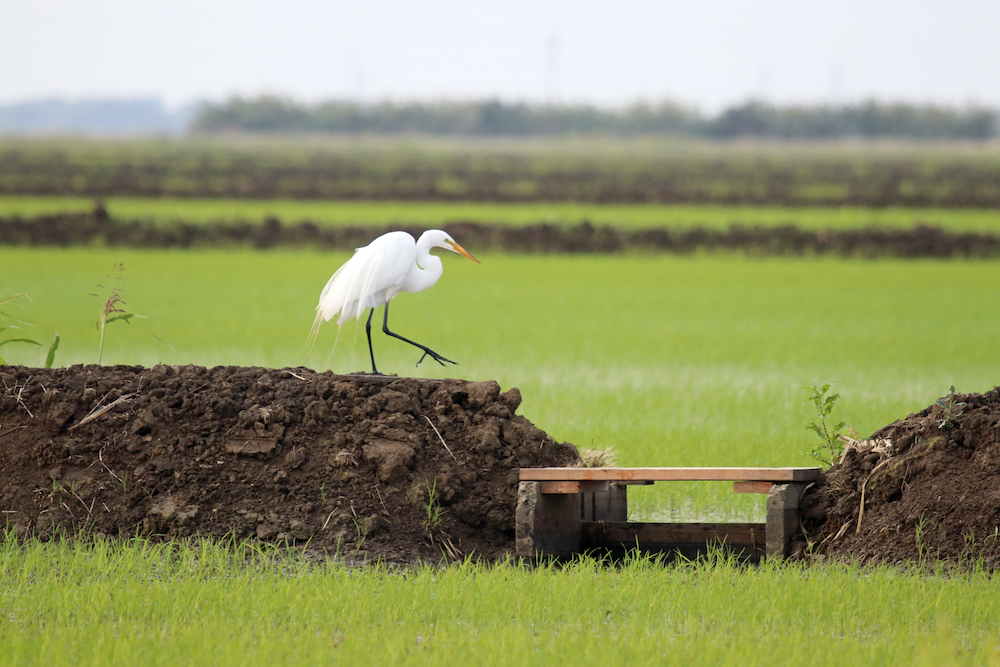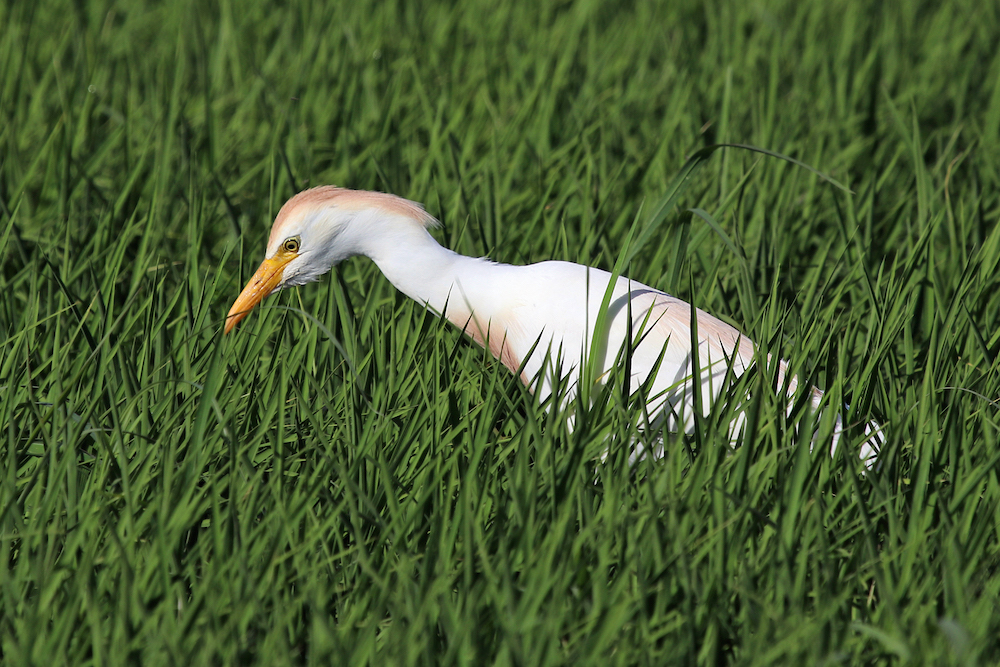Rice Country Icons
By Luke Matthews
There are three species of Egret that can be found year-round in the Sacramento Valley: Great, Snowy, and Cattle. All three of these species are medium to large white birds with long legs and long yellow or black bills. Given their similarities, a casual observer could be forgiven for assuming that they all belonged to the same species. Despite the similarities that they share, there are a few unique features that can be used to separate them quite easily.

Great Egrets are the largest of the three and are the most common egret species in the Sacramento Valley. These large birds have black legs and large yellow bills. They forage mostly by wading in water looking for prey items; however, they can regularly be seen hunting on dry land, particularly areas with high rodent densities.
Snowy Egrets are the second largest of the three and are also fairly common in the Valley year-round. The distinct features on these birds is their relatively long black bills and black legs with stark yellow feet (almost as if they are wearing yellow snowshoes). Like Great Egrets, these birds also hunt primarily by wading in water, but they frequently also hunt for small mammals, lizards, and snakes on land as well.

Cattle Egrets are the smallest of the three species and the least common in the area. In fact, despite their wide distribution across North America, Cattle Egrets are not native to the United States and originally came from Africa. Unlike the other two species, Cattle Egrets primarily hunt on dry lands and mostly hunt for insects. As you might expect from their name, Cattle Egrets are often found in association with Cattle, Horses, and other herd animals. They use the disturbance caused by these animals, or tractors and harvesters, to expose insects which they quickly grab-up and consume.
Overall, the unique features I described above are most distinct in the breeding season and some of the colors can change or fade throughout the year. However, it’s still a great starter guide to identifying these species.

When driving through rice country, keep your eyes open for wildlife, and see if you can identify all three of these egret species.
Luke Matthews is the Wildlife Programs Manager for the California Rice Commission






